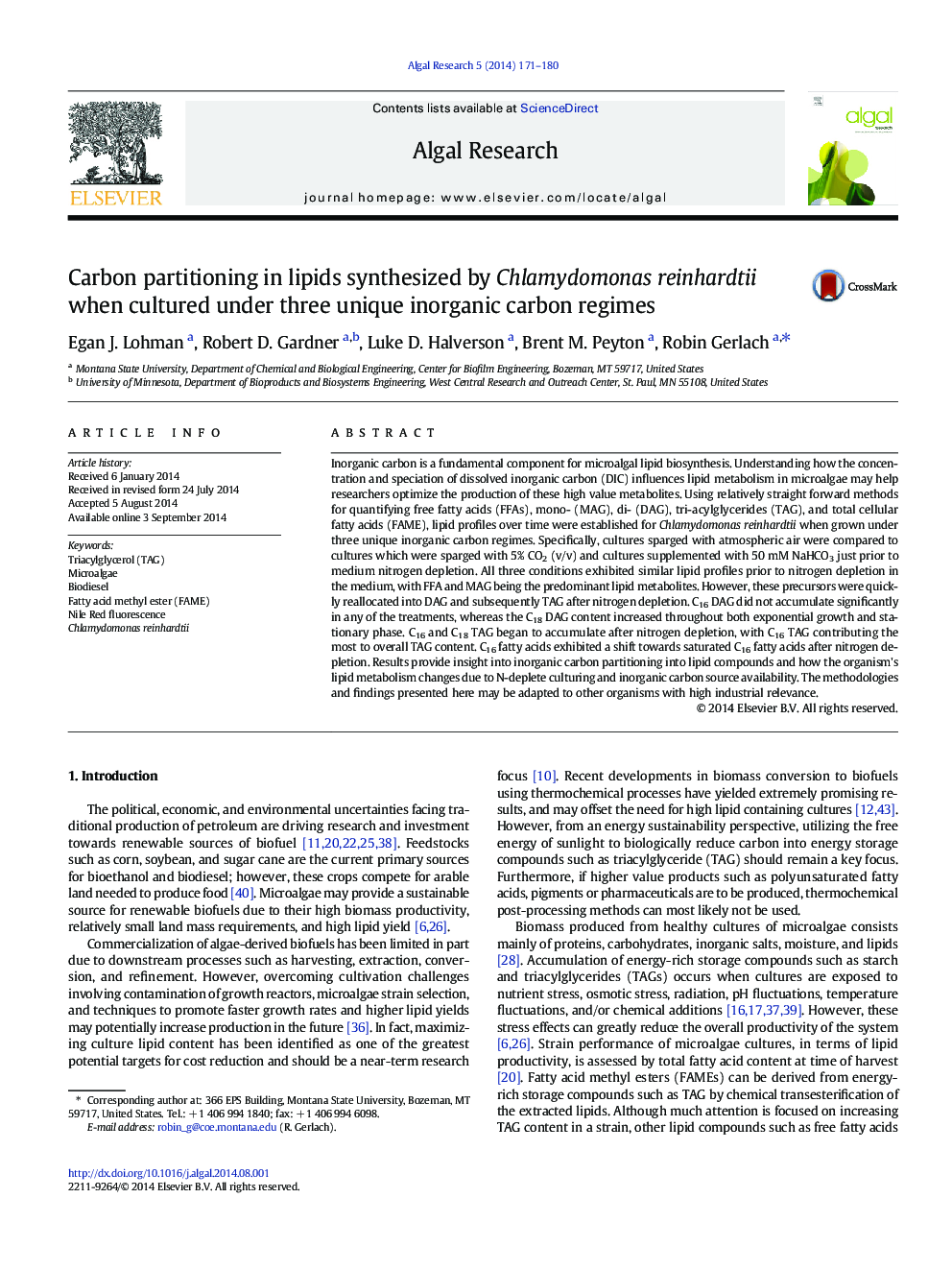| کد مقاله | کد نشریه | سال انتشار | مقاله انگلیسی | نسخه تمام متن |
|---|---|---|---|---|
| 1742083 | 1521826 | 2014 | 10 صفحه PDF | دانلود رایگان |

• C. reinhardtii CC124 was grown under three unique inorganic carbon regimes.
• Lipid profiles were established over time, including FFA, MAG, DAG, TAG and FAME.
• Results help elucidate how inorganic carbon is partitioned into lipid compounds.
• Results highlight changes in lipid metabolism due to nutrient availability.
Inorganic carbon is a fundamental component for microalgal lipid biosynthesis. Understanding how the concentration and speciation of dissolved inorganic carbon (DIC) influences lipid metabolism in microalgae may help researchers optimize the production of these high value metabolites. Using relatively straight forward methods for quantifying free fatty acids (FFAs), mono- (MAG), di- (DAG), tri-acylglycerides (TAG), and total cellular fatty acids (FAME), lipid profiles over time were established for Chlamydomonas reinhardtii when grown under three unique inorganic carbon regimes. Specifically, cultures sparged with atmospheric air were compared to cultures which were sparged with 5% CO2 (v/v) and cultures supplemented with 50 mM NaHCO3 just prior to medium nitrogen depletion. All three conditions exhibited similar lipid profiles prior to nitrogen depletion in the medium, with FFA and MAG being the predominant lipid metabolites. However, these precursors were quickly reallocated into DAG and subsequently TAG after nitrogen depletion. C16 DAG did not accumulate significantly in any of the treatments, whereas the C18 DAG content increased throughout both exponential growth and stationary phase. C16 and C18 TAG began to accumulate after nitrogen depletion, with C16 TAG contributing the most to overall TAG content. C16 fatty acids exhibited a shift towards saturated C16 fatty acids after nitrogen depletion. Results provide insight into inorganic carbon partitioning into lipid compounds and how the organism's lipid metabolism changes due to N-deplete culturing and inorganic carbon source availability. The methodologies and findings presented here may be adapted to other organisms with high industrial relevance.
Journal: Algal Research - Volume 5, July 2014, Pages 171–180